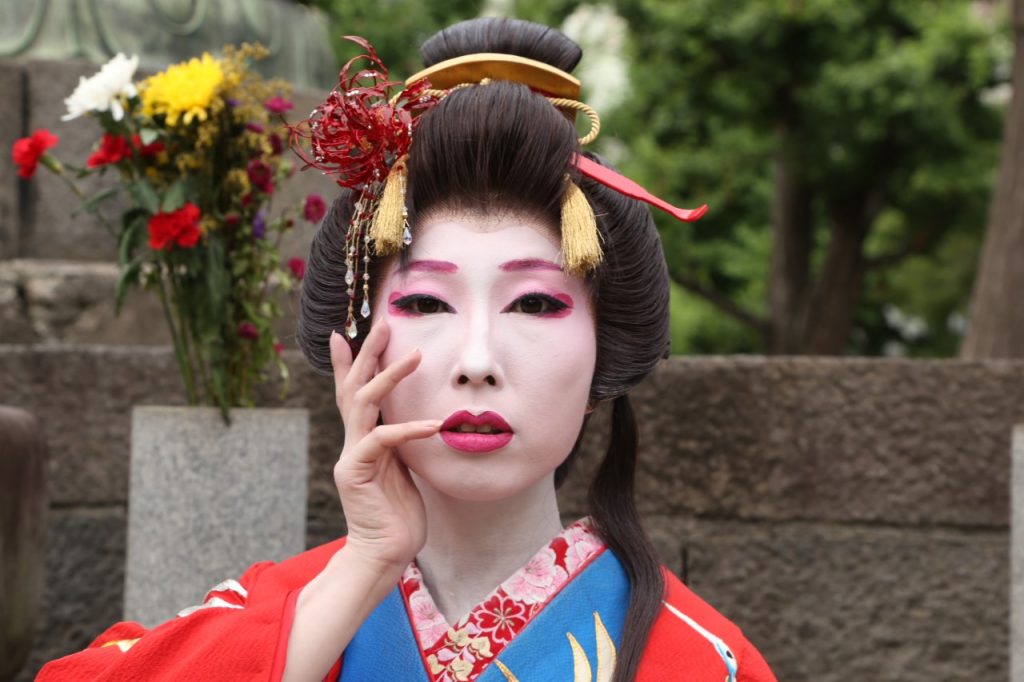
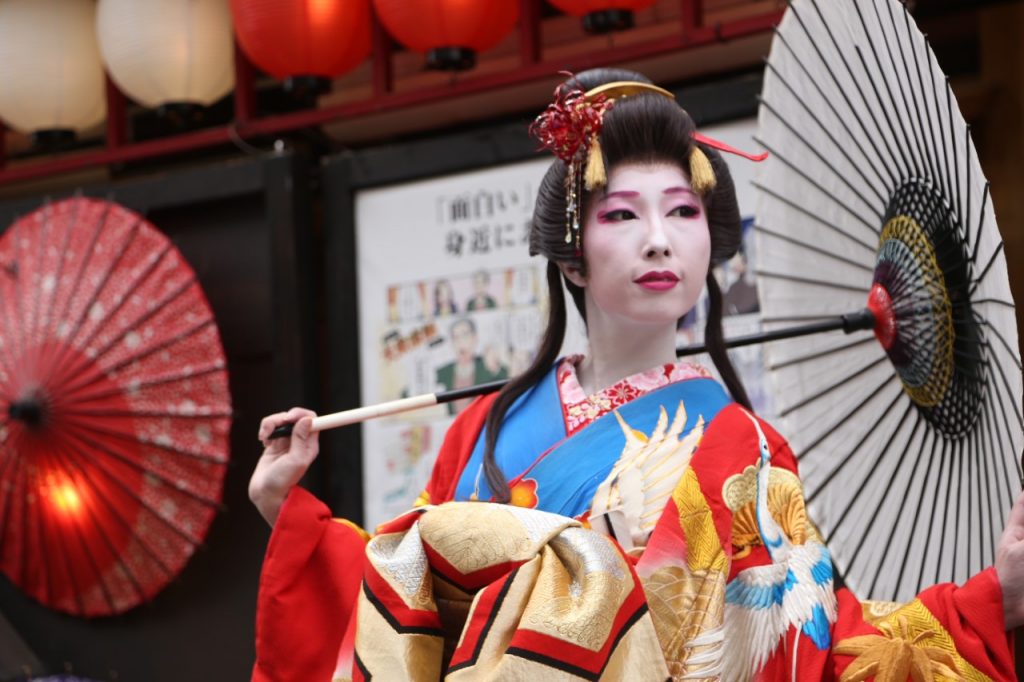
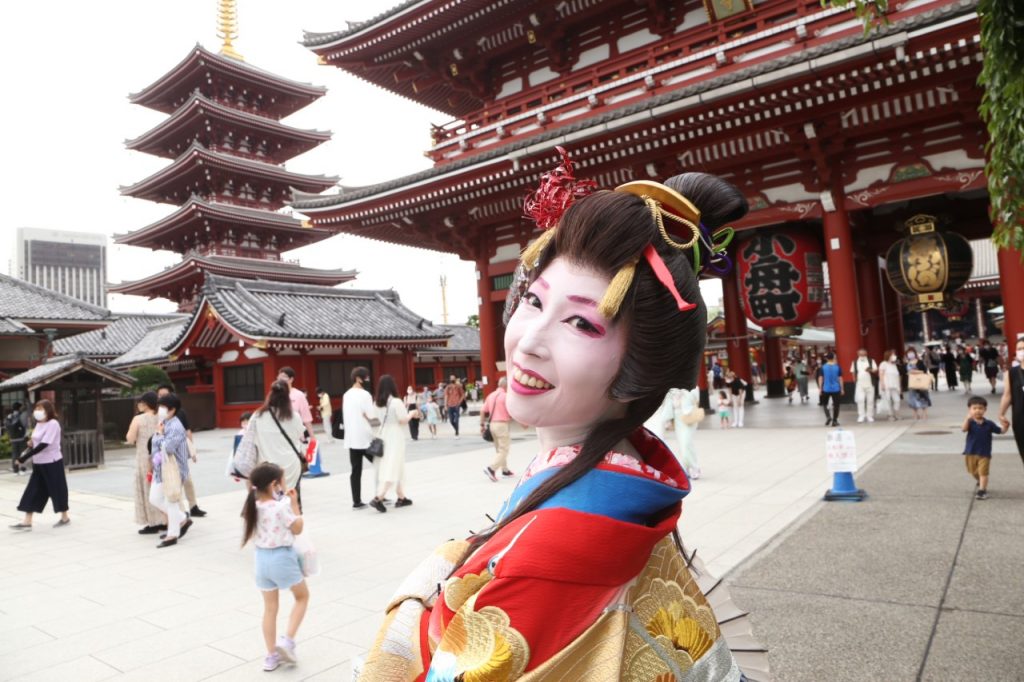
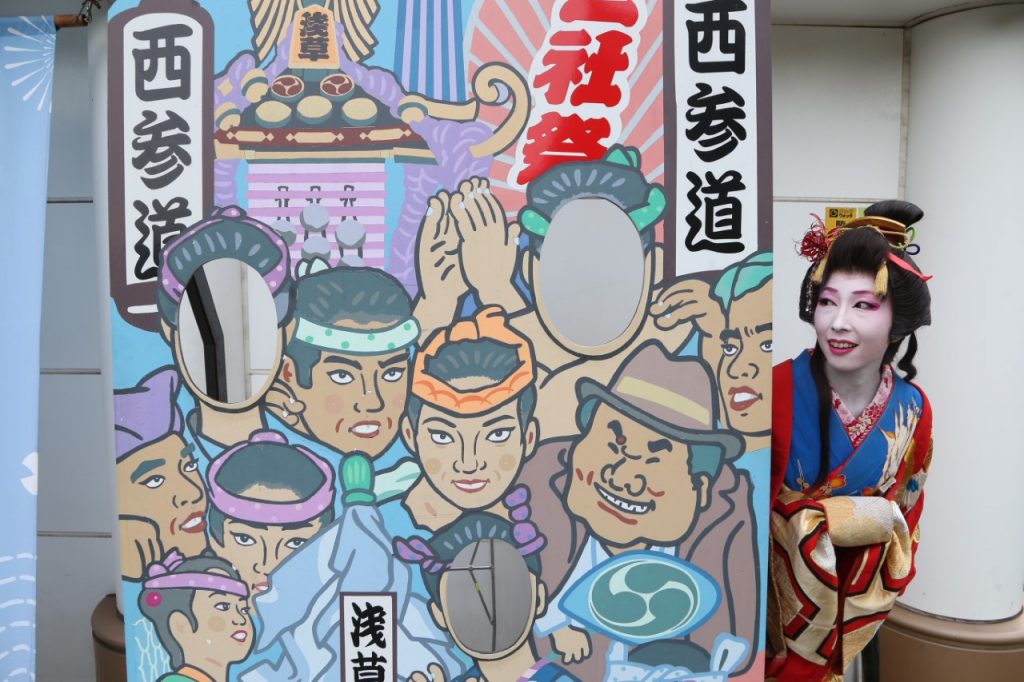
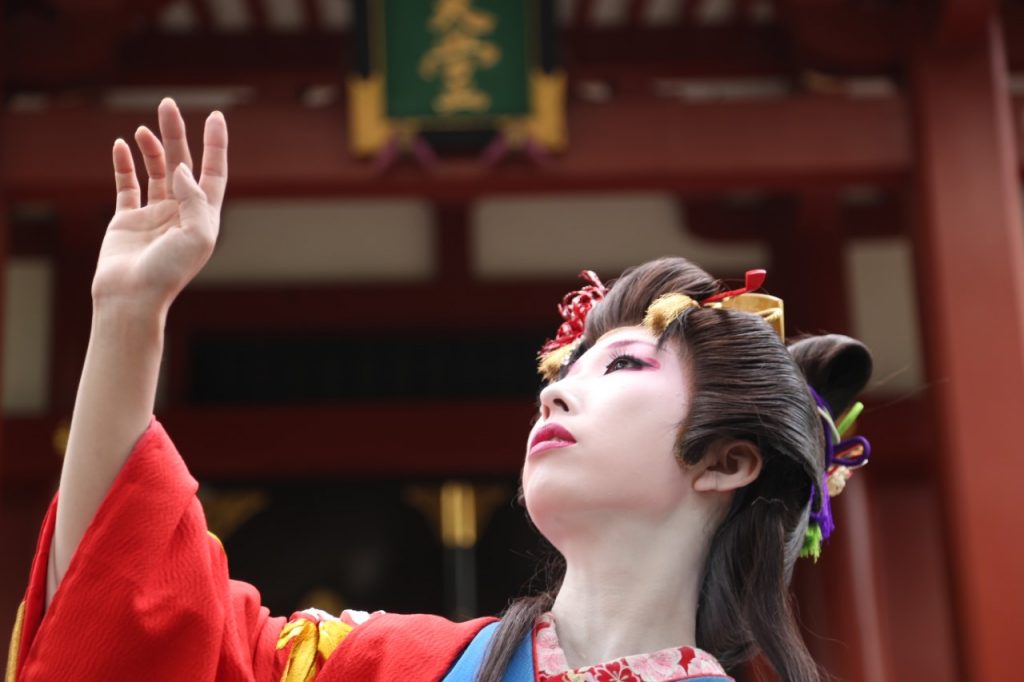





Pierre Boutier
TOKYO: Tomomitsu is a Japanese woman who carries on the Oiran tradition in the Yoshiwara district of Tokyo, where one finds the Sensoji temple, one of the most famous and tourist beloved Buddhist temples in Tokyo.
Tomomitsu, very successful before the coronavirus crisis, has effectively been out of work for over a year.
Before the pandemic, her work consisted of practicing and performing traditional arts such as Buyo dance in theaters, posing as a model, or conducting promotional activities in matsuri (traditional festival) such as the August “Obon” festival. However, hotels and restaurants are struggling economically of late because of the pandemic and the drop in attendance by their customer base, and in places where she performed for shows that are no longer able to pay her.
Tomomitsu now helps at a Kimono shop to pay the bills and occasionally performs with an actor who plays a Shishi Mai (a lion dog) featured in Japanese mythology. Before the Corona crisis, she served several times during the “Cool Japan” campaign and was very popular with foreign tourists. Sometimes together with a dozen other Oiran, she danced in cabarets such as the monster café in Shibuya or the Japan Expo in France.
She told Arab News Japan that, with the recent sudden disappearance of tourists and matsuri, many treasured ancestral traditions might inadvertently disappear as practitioners must turn to other employment, which would be a genuinely tragic loss for Japan. With white powder makeup covering her face and neck like the Geisha and walking through Asakusa district, where the shops are often closed, Tomomitsu frequently posed for foreigners residing in Japan for commemorative photos.
On Saturday, a shopkeeper stopped her from offering her the opportunity to promote his cuisine stall in exchange for free food, a bottle of Shochu (Japanese rice alcohol), and tempura chips unique to Japan. From such experiences, we can see that networking and solidarity between shopkeepers and artists represent a brave defense to such difficult times experienced by Tomomitsu and her ever-decreasing circle of fellow Oiran in the floating world.
Oiran in traditional Japan was high ranking exquisitely beautiful courtesans able to perform traditional dances and sing classic songs. They were ubiquitous during the middle of the Edo Era (17th – 19th centuries), and they were emblematic of Japan’s ethereal and mysterious floating world (Uki Yo). Oiran wear kimono of shimmering colors and are thus different from the better known Geisha. The latter wear more understated kimono and have since Edo Era largely succeeded them. However, the Geisha has struggled in recent years to find dedicated young Japanese women to continue the tradition.
Still for a bit longer, at least, through the gifted and selfless dedication of Oiran like Tomomitsu, it is possible to catch a glimpse of an exquisitely beautiful world and an aesthetic tradition that once, in significant part, helped define Japan.